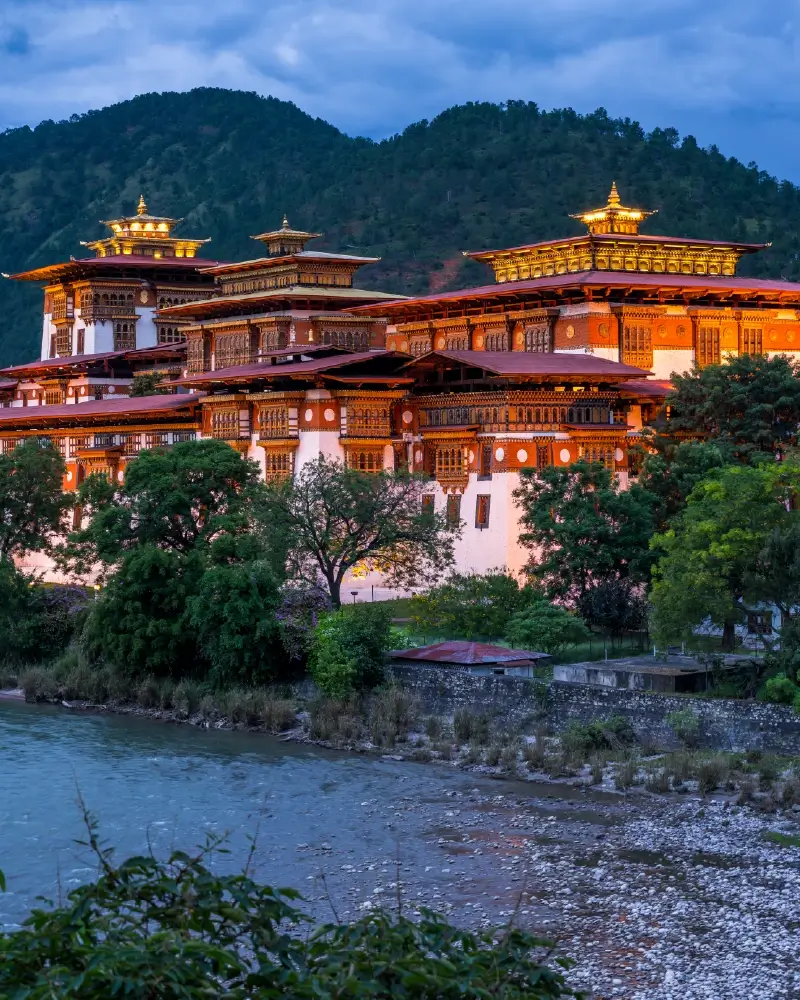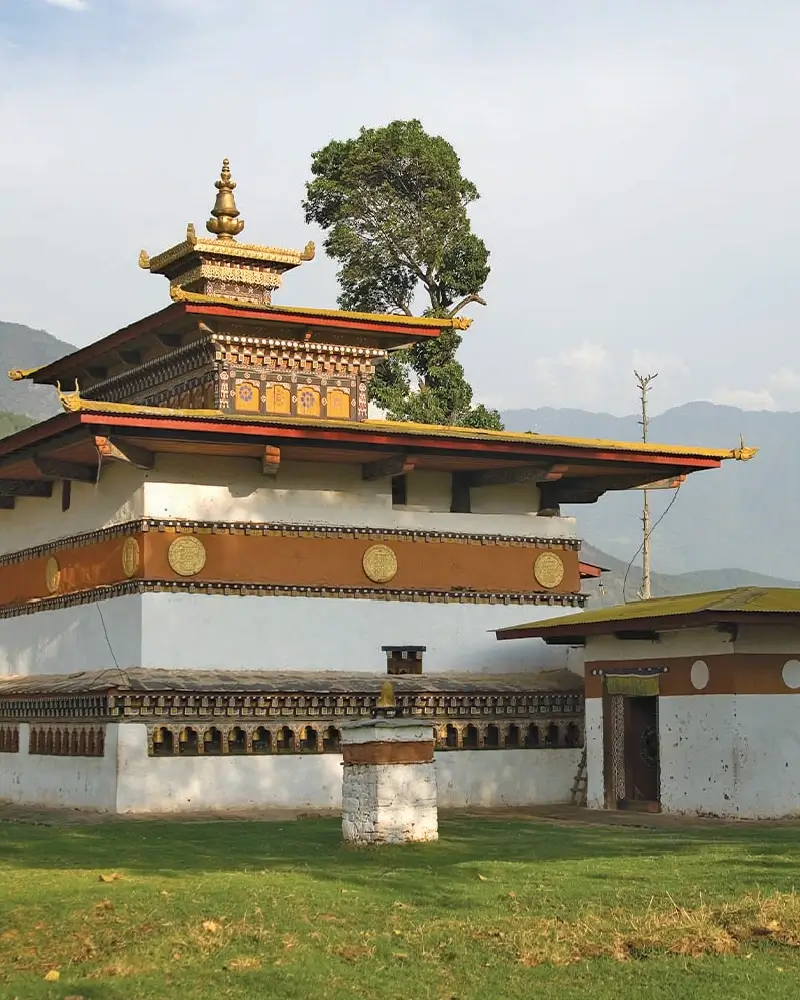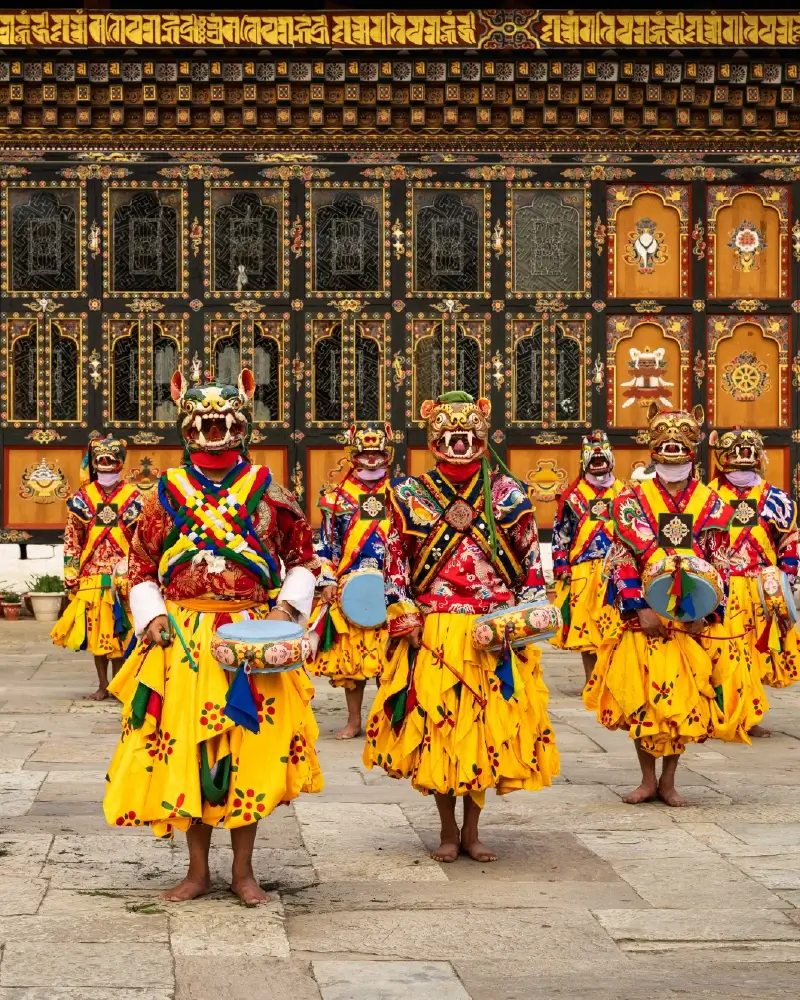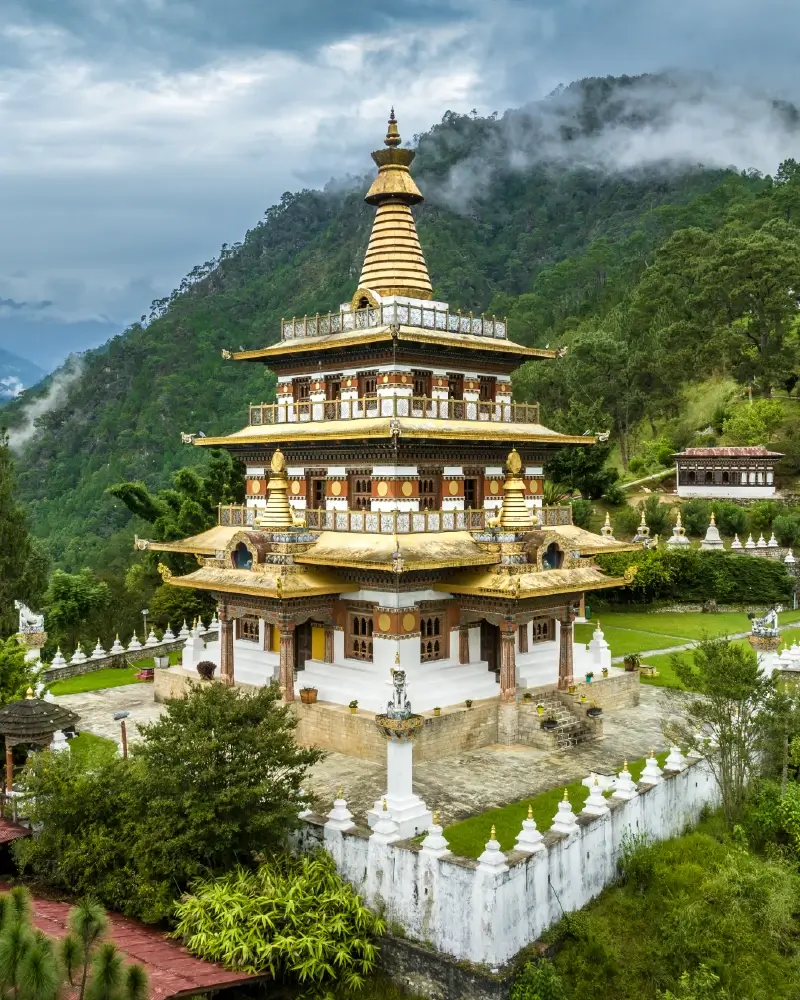Attractions for tourists
Where rivers meet history and timeless beauty.
Punakha Dzong
Punakha Dzong, often referred to as the “Palace of Great Happiness,” is one of Bhutan’s most iconic landmarks and a masterpiece of traditional Bhutanese architecture. Built in 1637 by Zhabdrung Ngawang Namgyal, the dzong sits majestically at the confluence of the Pho Chhu (male) and Mo Chhu (female) rivers, creating a breathtakingly serene setting.
As Bhutan’s second-oldest and second-largest fortress, it has played a central role in the nation’s history, serving as the former capital and the site of important events, including royal coronations and the hosting of the annual Punakha Tshechu festival. The dzong is richly adorned with intricate woodwork, towering whitewashed walls, and beautifully painted murals that reflect the country’s deep spiritual heritage.
It also houses sacred relics of the Drukpa Lineage and remains the winter residence of the central monastic body. Surrounded by scenic landscapes, Punakha Dzong is a timeless symbol of Bhutan’s cultural and spiritual identity.

Chimi Lhakhang
Chimi Lhakhang, also known as the “Fertility Temple,” is a revered Buddhist monastery located in the Punakha Valley of Bhutan. Built in 1499 by Lama Ngawang Chogyal, it was dedicated to the memory of Lama Drukpa Kunley, popularly known as the “Divine Madman,” who is celebrated for his unconventional methods of teaching Buddhism.
The temple is especially famous for blessing couples with fertility and is frequently visited by those seeking to conceive children. Surrounded by scenic rice fields and traditional Bhutanese villages, the temple is reached by a short, picturesque hike that offers a glimpse of rural life. The monastery is adorned with unique symbols and murals, including phallus paintings, which represent fertility, protection, and the blessings of Lama Drukpa Kunley.
Today, Chimi Lhakhang remains a place of deep spiritual significance and cultural fascination, drawing both pilgrims and travelers seeking blessings and insight into Bhutan’s traditions.

Punakha Festival
The Punakha Festival, also known as Punakha Tshechu and Drubchen, is one of Bhutan’s most vibrant and significant cultural celebrations. Held annually in the majestic Punakha Dzong, the festival commemorates Bhutan’s victories over Tibetan invasions in the 17th century and honors Guru Rinpoche, the revered saint who introduced Buddhism to Bhutan.
The event features a series of colorful mask dances, sacred rituals, and traditional music performed by monks and laymen, each carrying profound spiritual symbolism. One of the highlights is the unfurling of the giant thangka (sacred scroll) of Guru Rinpoche, believed to bring immense blessings to all who witness it. The festival also reenacts historic battles, showcasing Bhutan’s resilience and unity.
Locals and visitors alike gather in traditional attire, creating a vibrant atmosphere of devotion, joy, and community spirit. The Punakha Festival is not only a religious occasion but also a cultural spectacle that preserves Bhutan’s heritage and identity.

Khamsum Yuley Temple
Khamsum Yuley Namgyal Chorten, commonly known as Khamsum Yuley Temple, is a stunning architectural gem located in the Punakha Valley. Built under the guidance of Her Majesty the Queen Mother, Ashi Tshering Yangdon Wangchuck, the temple was completed in 2004 after nearly a decade of meticulous craftsmanship.
Unlike many ancient temples, Khamsum Yuley was constructed specifically to promote peace, harmony, and the well-being of all living beings. Perched high on a ridge overlooking the Mo Chhu River, it offers breathtaking panoramic views of lush valleys, terraced rice fields, and the surrounding mountains. The temple is adorned with intricate murals and sculptures representing deities from Tantric Buddhism, reflecting profound spiritual teachings.
Reaching the site requires a scenic hike through rice paddies and pine forests, making the journey as memorable as the destination itself. Khamsum Yuley Temple beautifully combines spirituality, artistry, and Bhutan’s commitment to peace and compassion.


